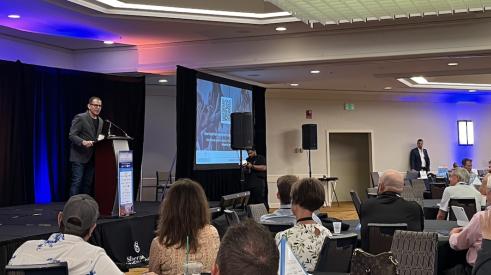Many years ago, while laying in bed flipping through television channels, I ran across an infomercial for a weight-loss program. It claimed you could lose 10 pounds in 21 days. At the time I was about 40 pounds overweight, so my wife elbowed me and said I should write down the 800 number.
Exactly 21 days after receiving and starting the program, I had lost 10 pounds. Wow! It really worked. I kept at it, and after another couple of months, I lost the other 30 pounds.
In addition to feeling much healthier, I was also really intrigued with the methodology behind the program, which emphasized small improvements every day. I knew this approach could also be applied to business and could help people overcome the three main obstacles to business improvement: lack of time, lack of discipline, and lack of a specific plan. Here are three themes for those who want to dramatically improve their business health.
1. Get motivated. Most of us are driven to change based on our reaction to pain or our desire for pleasure or real gains. This pain/pleasure dynamic can be reactionary or it can be proactive—something that you can control.
When I’m feeling the need for change or improvement, I begin by asking myself “Why?” I find that with a strong enough “why,” I will have the discipline to stick with the improvement over time and will invest the time needed to create a plan and engage others. So begin with a list of all the reasons why. You’ll be surprised at how quickly this makes the improvement become a priority.
2. Be realistic. Whenever I fail at something, it usually isn’t because it was a bad idea or an unworthy cause. I fall short because I’m not realistic in the goals and expectations I set. Just as a crash diet isn’t the healthiest way to lose weight, a goal that’s too extreme dooms you to failure.
For example, if you want to improve your sales close rate, set a modest short-term goal, such as moving it from 25 percent to 28 percent in 60 days. If it works, start over for the next 60 days. If you can sustain this modest improvement for an entire year, you will increase your close rate by 20 points and almost double your sales without increasing your lead count or your sales team.
3. Monitor, monitor, monitor. One of the reasons why people fail to improve is that they do not regularly monitor progress. If you want to improve client satisfaction ratings or lead times, then make sure you are monitoring those things at regular intervals. The time period can vary—as with weight loss, you don’t need to check your weight multiple times each day, but you do want to jump on the scale a couple of times each week. Finding the right cadence for monitoring an area of improvement can be as important as any part of the improvement plan.
Start any improvement process by carving out some time. Make an appointment with yourself and treat it as you would any other appointment with a client or team member. By setting aside a couple of hours each week for four weeks, you will not only be able to deconstruct, reconstruct, and create a plan, but you will also begin to engage others.
For me it all began with an elbow to the ribs. But it can also start with a look in the mirror, whether real or metaphorical, and acting on what you see. If you can take that simple step and stick to it, the rewards are life-changing. PR
---

Mark Richardson, CR, is a business growth strategist and author of the best-selling book, How Fit is Your Business? as well as his latest book, Fit to Grow. He can be reached at mrichardson@mgrichardson.com or 301.275.0208.
Three key elements to dramatically improving your business
Add new comment
Related Stories
Brian Gottlieb Receives Remodeling Mastery Award
Presented by industry icon, Mark Richardson, the award celebrated Gottlieb’s extraordinary impact on remodeling
What's Beyond the Hammer?
Working with Brian Gottlieb on the book Beyond the Hammer provided a masterclass on how to build an aligned team
Real AI Applications For Remodelers
Tech-forward remodeler Michael Anschel shares how he uses artificial intelligence in his business.
How to Eliminate Boring, Languishing Meetings
Leff Design Build ensures maximum productivity and efficiency through these straightforward methods
5 Counterintuitive Strategies to Improve Your Business
Follow these strategies to inspire employees, instill trust, and beat the competition
Couple Act As Much More Than General Contractors
How LBR Partners uplifts and educates their Spanish-speaking trade partners
Artificial Intelligence Meets Design
An architect looks at the pitfalls of using technology to take over human design tasks
How to Correctly Hire for Business Growth
Refloor CEO Brian Elias shares exactly how his company hires the correct people for the correct seats
Managing Business Risk to Embrace Risk
As remodelers, our product is risk. Yet within our businesses, we fear risk. Just like with your projects, if you plan accordingly, your risk comes with reward
What the Most Successful Remodelers are Doing Right Now
Industry advisor Mark Richardson shares the answers to his three most asked questions: What's the remodeling market like? What are other remodelers doing? How do I measure up?













